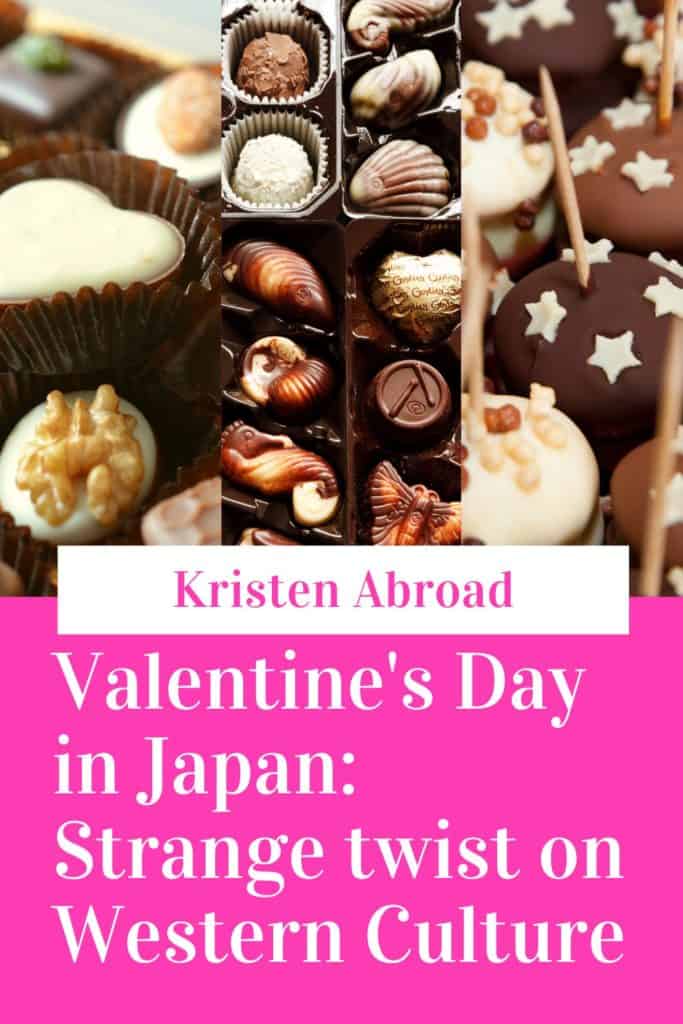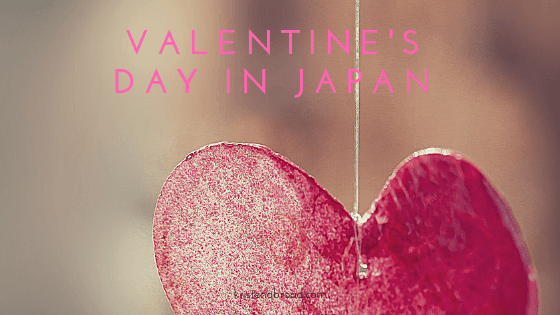Valentine’s Day in Japan is celebrated on February 14th just like the rest of the world. However, the similarities may stop there. Of all the twists on Western culture, I think this one is my favorite.
Valentine’s Day in Japan is for the ladies to give chocolates to the gentlemen. And there are varying degrees of what that means. Frankly, it can get a bit expensive (especially for someone that works with mostly men), but it’s so much fun!
[Editor’s Note: This post was originally published in January of 2018 and has been updated for freshness, accuracy and comprehensiveness.]
How do you say Valentine’s Day in Japanese?
It is known as “バレンタインデー” which is fully in katakana, Japan’s syllabary for foreign words. This means it is merely the Japanese pronunciation of the English words (in this case, katakana can be used for any foreign words). You can also see it sometimes as “ヴァレンタインデー” which is slightly closer in pronunciation. There isn’t a kanji equivalent.
History of Valentine’s Day in Japan: When did it start?
In 1931, a chocolate store named Morozov opened on トアロード (toa road) in Kobe. Something nearly unheard of at the time. Chocolate was very rare. After Kobe Port opened to the outside world in 1868, Toa Road (which actually can be seen written several different ways with various theories behind them) became a popular location for foreigners to live.
The founder learned about the tradition of Valentine’s Day from an American friend and wanted to start the practice in Japan. In 1935, their first advertisement about Valentine’s Day ran in the local English newspaper. (I’ve seen it was 1936 but I’m going to go with the own companies histories and the confusion is probably because Showa years start on April 29th.)
However, you can thank another company for ingraining the tradition of women being the ones to give chocolate on Valentine’s Day. In 1958, a similar story played out for the chocolate company Mary’s in which an employee learned of Valentine’s Day from a foreign friend and thought the idea was brilliant.
It was an unknown concept in the Kanto plain so in 1959 Mary’s ran a slogan of “女性が男性に1年に1度愛の告白ができる日” or basically “the one day of the year that women can confess their love”.
From there, Mary’s Chocolate has been instrumental in the evolution of Valentine’s Day in Japan and has even been awarded a “Cultural Achievement Award” for it.
The different type of chocolate giving on Valentine’s Day in Japan
Whereas in the US, the pressure is on the men to gift their significant others, Japan is the opposite. However, for the females in Japan. it’s a weird combination of obligatory grade school-Esque “everyone gets something” and submission of love to either a known significant other or an opportunity to confess their love to a secret crush or crushes!
The emphasis is on the chocolate giving, not on a date. Christmas eve actually holds the title for the most romantic day in Japan.
本命チョコ, honmei choco
“Choco” if it wasn’t obvious, is a shortening of the word “chocolate”. “Honmei” means “favorite” or “heart’s desire” even though the kanji that make it up can be “origin” and “fate”. But nonetheless, Honmei Choco is your high tier of chocolate-giving. This one is for your boyfriends, husbands, and secret crushes. Often times these are homemade and very preciously concocted.
義理チョコ, giri choco
While “義理” (giri) is normally translated as “obligation”, I always like to think of it as more like a “sense of duty” (I can probably thank WaniKani for that). Makes it sound a little better than “obligation chocolate”.
This, gentleman, is what you receive from your female coworkers (unless of course, they have a secret crush on you!).
友チョコ, tomo choco
Recently, as if this holiday wasn’t expensive enough, it’s become popular to give chocolate to your female friends as well. Hence, tomo choco. Tomo coming from a shortening of the word “友達” or “tomodachi” for “friend” and “choco” the same cute abbreviation for chocolate.
自分チョコ, jibun-choco
Finally, it’s, of course, most important to love yourself and there we have “jibun choco”. “自分” is basically a pronoun to mean “self”. So in other words, “self chocolate”.
Where to buy Valentine’s Day Chocolate in Japan?
If you want to go full out, the department stores are where you want to head. There will be plenty of advertising to point you in the correct direction for Valentine’s day chocolate. To top it off, Japan loves gift wrapping so there are small boxes of chocolates that can run about 300 yen all the way to larger boxes in the 6000 yen range already wrapped for you!
While its “traditional” to give chocolates, another option is to go to a sweets store or お菓子屋 (okashiya). If you are near Kawagoe, they have a whole street full of sweet shops to keep you occupied called お菓子屋横丁 (Okashiyayokocho).
For a less expensive option, you can try for some 100 円均一 (ひゃくえんきんいち, 100 yen shop) options! (They are also known as 百均, ひゃっきん, hyakkin for short).
One thing to note, watch out for the amount you spend on obligation chocolates because when White Day rolls around the following month, there are some unspoken “rules” that can leave you swimming in chocolates!
Pin this for later

